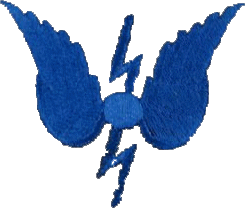|
NOTES. | |
Type 52. Series FH, FHV and CFH, are low power Master Oscillator M/F - H/F transmitters incorporating Transmitter 5Q. This series will replace Types 43A, 45, 51H and 51L. The transmitter 5Q was originally designed as part of the transportable set Type 52T (now Type 52ERT) but has now been redesigned to work on mains voltage supply. The differences between Types 52FH, 52FHV and 52CFH is that the CFH has a local-change-over system enabling the set to be controlled either locally or through the CCS (Central Control (W/T) System).
It is a low power set (25-30 Watts in the aerial) and has a range of 50 miles using CW on M/F with the normal ranges expected on H/F including the possibility of world wide at times.
The transmitter 5Q (mentioned above) can be used for R/T if it is fitted with a special adaptor, but it wasn't fitted to this application. The set shows that it has a four position switched marked "Off", "CW", "ICW" and "R/T".
A tumbler switch is fitted beneath the operators bench by means of which the operator can switch on the transmitter at will. A further tumbler switch next to it completes the the DC supply to the Morse key.
The modulator fitted on this set is used only for MCW working.
Just like the Type 48 this transmitter uses an Absorber Circuit when using CW. Under Further Reading see file Absorber Circuit.
As written in 1938 ".....all sets will eventually be fitted with a crystal attachment which provides crystal control of the transmitter frequency. The attachment is fitted inside the master oscillator compartment and is visible to the left of the M.O. coil when the transmitter panel door is open. Plug in crystals (104 on drawing) are used and the set may be operated at the fundamental frequency of the crystal, or at double or treble the fundamental frequency. It is necessary to remove the M.O. coil in order to insert the crystal. The change over to the crystal control is effected by means of a two position switch (105) which is operated by the use of a screwdriver.
The original titles of these sets were 52 HA, HB, HC.
In addition, there was a Type 52T which became a Type 52ERT. This was a transportable set in three loads. The M/F and H/F transmitters are interchangeable in the transportable box and cannot be carried simultaneously. Receiver B19 and R/T attachment are incorporated. Weight of loads is 180 lbs each approximately. A fourth load (spare batteries and second mast) can be taken.
(1) The M/F side details were: frequency range 150-1500 kc/s, M.O. Control, CW/MCW (1000 c/s tone) & R/T, transmitter 12V car battery charged by a small motor generator, 30 Watt output, range approximately 50 miles.
(2) The H/F side details were: frequency range 900-13500 kc/s, M.O. Control, CW/MCW (1000 c/s tone) & R/T, transmitter 12V car battery charged by a small motor generator, 30 Watt output, range approximately 50 miles and more.
(3) Associated receiver: 99V dry battery pack for HT, 2 x 2V jelly cells for filaments, charged from 12V transmitter car battery.
Look under Further Reading to see the full transmitter schematic 5Q. From early times, note the crystal (104) and the crystal of self control for the master oscillator (105).
For tuning the transmitter including warnings for radio silence look at the file under Further Reading.
Also look under Further Reading for Aerial and Control Circuits etc 52. |


